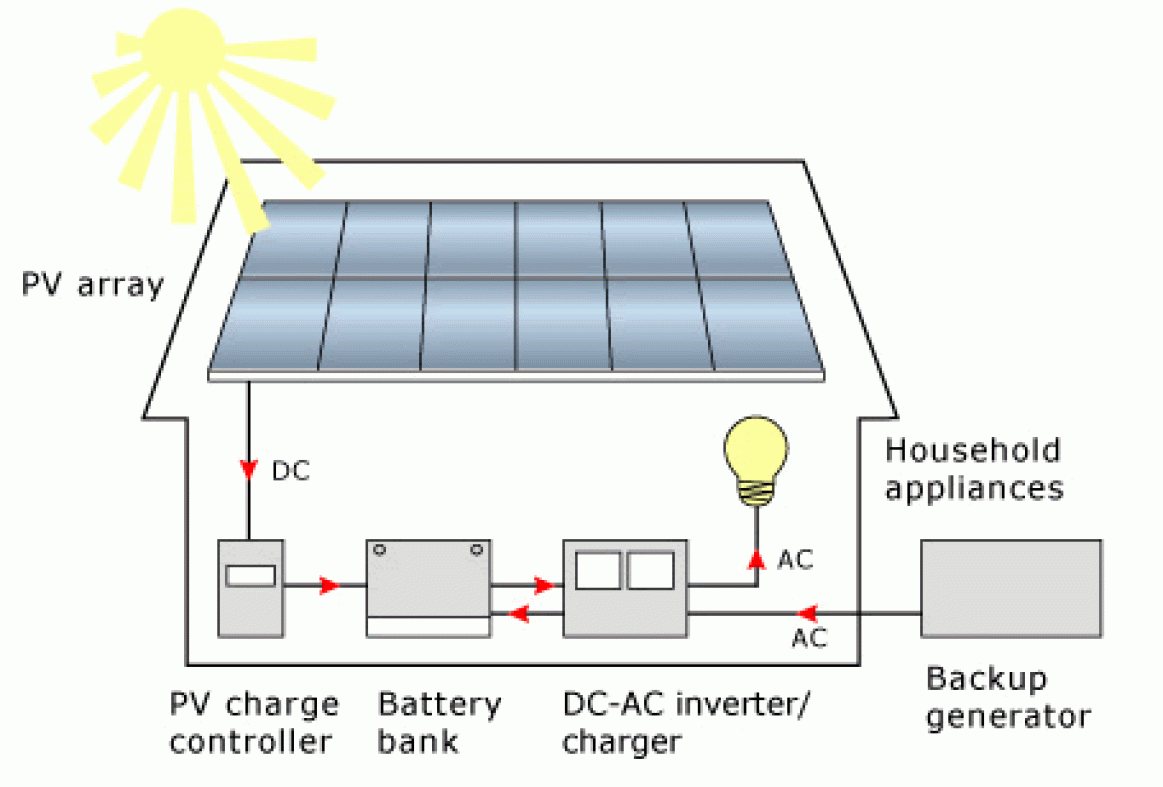
Off grid or autonomous solar systems are installed in remote locations where utility grid access is limited or impossible. It is also commonly employed in the areas where power grid access is expensive or where there is continuous risk of blackouts. Additionally, autonomous solar systems that are installed on boats and RVs require an independent power solution.
Typically off grid systems require a larger up-front investment than grid tied systems due to additional charge controller and batteries that are employed in the system. Please note that in an off-grid system, only off-grid inverters should be used. In compensation for these additional upfront costs, owners are provided with independence and a feeling of self reliance.
The power that is generated by the renewable energy source initially charges the batteries through the charge controller. The inverter helps to regulate the voltage and in most cases converts the DC power to AC (what normal home appliances require). Most RVs and boats do not require an inverter since appliances are suitable for DC current.
It should be noted that at a site where regular power blackouts are common, an off-grid system is the best solution. A grid-tied system will shut off during the blackout due to safety reasons.
[Image credit: beelandsolar]